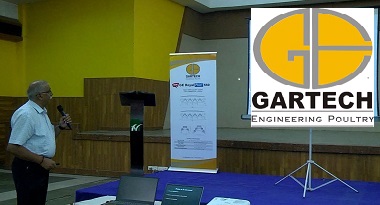In recent years, the poultry industry has witnessed a remarkable transformation with the advent of automation technologies. Traditional manual labour and outdated practices are being replaced by sophisticated automated systems that offer increased efficiency, improved productivity, and enhanced animal welfare. This article explores the significance of poultry automation and its profound impact on the industry. Namakkal district in Tamil Nadu is perhaps one of the country’s top egg and poultry producers if not in South East Asia as a whole. It has long been hailed as the “Egg Capital” of the country.
According to the Namakkal Poultry Farmers’ Association data, egg production in the district has witnessed a significant decline of over 30% in the past three years. In 2020, Namakkal produced approximately 3.5 billion eggs, a stark drop from the previous years. Water scarcity, climatic conditions & unhygienic environments such as manure mismanagement and the ever-growing wing problem of flies this has directly impacted the health and productivity of the hens, leading to reduced egg-laying capacity and an increase in mortality rates up to 5% to 10 %. This is because most of poultry farms are still struggling with conventional methods.Understanding the need for an hour, the recently held seminar on 23rd June 2023, initiated by Gartech Equipments Pvt Ltd on the revolution in Poultry Automation & new techniques in the poultry industry with the eminent speaker Dr D Chandrasekaran renowned animal nutrition who is also Professor and Head of the Department of Animal Nutrition, Veterinary College and Research Institute & Mr Vishal Huddar General Manager at Gartech Equipments Pvt Ltd explains the importance of the Layer Housing system in the current context.
The Pointers included:
Enhanced Efficiency and Productivity: Automation has revolutionized poultry farming by streamlining various processes, leading to improved efficiency and increased productivity. From automated feeding and watering systems to robotic egg collection, these technologies have significantly reduced manual labour requirements. By automating repetitive tasks, such as cleaning and disinfection, farmers can save valuable time and allocate resources more efficiently, allowing them to focus on other critical aspects of poultry management.
Precision Monitoring and Data Analytics: Automation systems in poultry farms are equipped with sensors and monitoring devices that provide real-time data on environmental conditions, feed consumption, water quality, and animal health. This level of precision monitoring enables farmers to closely track and analyze critical parameters, identify potential issues early on, and implement corrective measures promptly. By leveraging data analytics, farmers can make informed decisions, optimize resource allocation, and enhance overall flock management.
Improved Animal Welfare:Automation technologies have profoundly impacted animal welfare in the poultry industry. Advanced systems ensure consistent access to feed and water, reducing stress on the birds. Automated climate control systems maintain optimal temperature and humidity levels, creating a comfortable environment that promotes healthy growth and reduces disease susceptibility. Additionally, automated lighting systems mimic natural daylight cycles, enhancing bird behavior and minimizing stress-related issues. Bio-security and Disease Control: Poultry farms face significant challenges related to bio-security and disease control.
Automation plays a crucial role in mitigating these risks. Automated systems minimize human contact with birds, reducing the likelihood of disease transmission. Controlled access points, foot baths, and disinfection systems help prevent the entry and spread of pathogens. Furthermore, automated vaccination systems ensure the accurate and timely administration of vaccines, protecting flocks from potential outbreaks.
Labour Shortage and Cost Efficiency: Automation in the poultry industry has become a necessity due to labour shortages and rising labour costs. The industry faces challenges in attracting and retaining skilled labour, making automation an appealing solution. By investing in automated technologies, poultry farmers can reduce their dependence on manual labour and optimize operational costs in the long run. Although there may be initial capital investments, the long-term benefits of increased efficiency and reduced labour costs outweigh the initial expenses.
Environmental Sustainability: Poultry automation also contributes to environmental sustainability. Advanced systems help optimize resource usages, such as water and energy, by monitoring and controlling consumption. Automated waste management systems efficiently handle manure and other by-products, minimizing environmental pollution. By reducing resource wastage and adopting sustainable practices, the poultry industry can minimize its ecological footprint and contribute to a greener future.The incorporation of automation technologies in the poultry industry has ushered in a new era of efficiency, productivity, and animal welfare. From precise monitoring and data analytics to improved bio-security and cost efficiency, automation has become an essential tool for poultry farmers. As the industry continues to evolve, embracing automation will be the key to staying competitive, meeting consumer demands, and ensuring sustainable growth. By embracing automation, the poultry industry can achieve higher productivity, enhance animal welfare, and contribute to a more sustainable and efficient food production system.
